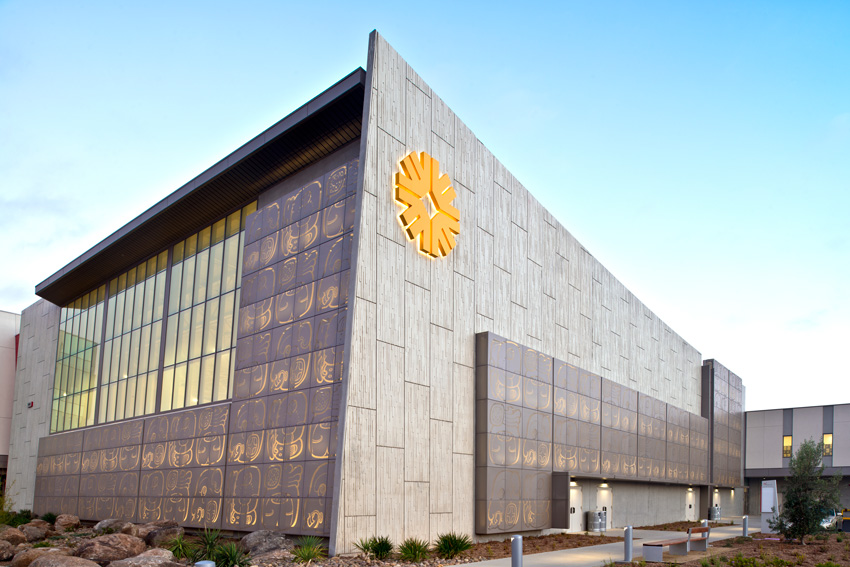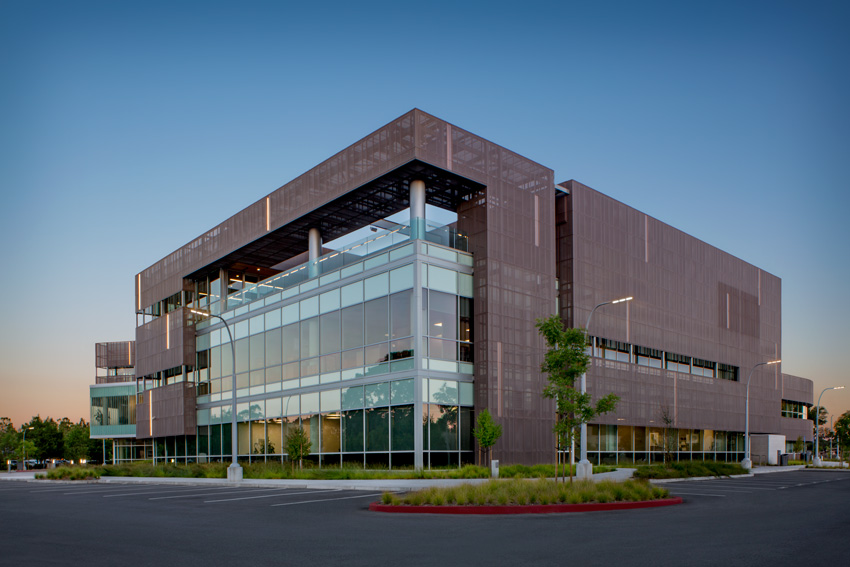Form and Function
A Special Note on Combustibility
Fire has become a bigger concern for today’s buildings. New fire codes and standards are being strictly enforced in more and more areas.
Virtually every building, process, service, design, and installation is affected by the National Fire Protection Association’s (NFPA’s) codes and standards. NFPA standards reflect changing industry needs and evolving technologies, supported by research and development, and practical experience.
For exterior assemblies, like metal panels, NFPA 285: Standard Fire Test Method for Evaluation of Fire Propagation Characteristics of Exterior Wall Assemblies Containing Combustible Components is the governing regulation. This standard provides a test method for determining the fire propagation characteristics of exterior wall assemblies and panels used as components of curtain-wall assemblies that are constructed using combustible materials or that incorporate combustible components.
NFPA 285 is used to evaluate the fire propagation characteristics of exterior wall assemblies and panels used as components of curtain-wall assemblies, as specified in the following: first, the ability of the wall assembly to resist flame propagation over the exterior face of the wall assembly; second, the ability of the wall assembly to resist vertical flame propagation within the combustible components from one story to the next; third, the ability of the wall assembly to resist vertical flame propagation over the interior surface of the wall assembly from one story to the next; and fourth, the ability of the wall assembly to resist lateral flame propagation from the compartment of fire origin to adjacent compartments or spaces.
Meeting Codes with Single-Skin Metal Panels
Single-skin metal panels offer distinct advantages for buildings looking to satisfy multiple code requirements. Single-skin metal panels are carefully manufactured, created without ACM, MCM, or any composite materials. This makes the panels noncombustible, unlike plastic-cored products, and NFPA 285 compliant. Certain manufacturers’ single-skin metal panels are fully tested to exceed ASTM standards and the latest AAMA 508-07 for pressure-equalized rainscreens. The interlocking panel design makes installation quick and easy; it also means no hidden sealants or tapes are used to pass testing certification. Certain single-skin metal panels, such as panels with an aluminum plate thickness of 0.080 inch, satisfy the test methods and performance requirements of Florida Building Code and Miami-Dade County test protocols.
DIGGING DEEPER: THE ENVIRONMENTAL PROFILE OF SINGLE-SKIN METAL PANELS
Single-skin metal panels provide both a natural and highly customizable solution for the design professional. With diverse aesthetics, design capabilities, and performance opportunities, they bolster a building’s performance, visual appeal, and life cycle. Yet having both form and function falls slightly short of the high bar set for modern materials. The best material must also be sustainable and environmentally appropriate.
Single-skin metal panels answer the need for sustainability—naturally. Metal is a 100 percent natural and recyclable product. Often, panels are manufactured from recycled and repurposed metal. Panels are produced quickly with highly automated equipment, avoiding unnecessary energy costs. No plastic is involved in the production of single-skin metal panels, saving dramatically on fossil fuels.
Leading manufacturers produce panels domestically and purchase metal from domestic mills, which saves transportation energy costs. Certain single-skin metal panel systems use no silicone sealants, joint sealants, or gaskets, which are made with petroleum. This offers further savings of fossil fuels and on future maintenance costs. Certain manufacturers offer finish systems that produce no VOCs. Kynar paint providers are environmentally conscious finishers. They use a 100 percent air capture system and destroy the VOCs with a regenerative thermal oxidizer so there is no adverse environmental impact.

Photo courtesy Dri-Design, Inc.
The Wellness & Aquatic Center at Southwestern College in Chula Vista, California, features a dramatic application of single-skin metal panels incorporating various colors and image technology.
WHERE FORM AND FUNCTION MEET: SINGLE-SKIN METAL PANELS
Today’s innovations in single-skin panels are designed to overcome shortfalls in older methods of exterior metal panel systems, including delamination, staining due to the effects of weather on joint sealants and gaskets, rising costs of production, inefficient installation practices, and a general lack of color, texture, and design options.
Using a natural material with simple design and having new objectives about the way a system could perform, both at the time of installation and for decades later, gave birth to leading single-skin metal panel technology. That vision results in a material fully meeting both form and functional requirements: a highly customizable, 100 percent recyclable, pressure-equalized rainscreen, architectural metal wall system that attaches to nearly any substrate without the use of clips or extrusions, manufactured efficiently and designed to install faster than any comparable product, saving time and money. Leading single-skin metal panels are designed to pass the most stringent air, water, and structural testing requirements in the industry, including the AAMA 508-07 test for pressure-equalized rainscreens as well as Miami-Dade County hurricane testing.
Amanda Voss, MPP, is an author, editor, and policy analyst writing for multiple industry publications and teaching live continuing education courses.










